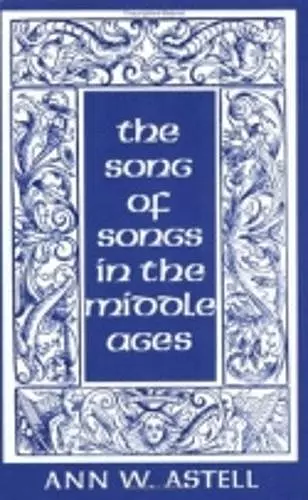The Song of Songs in the Middle Ages
Format:Hardback
Publisher:Cornell University Press
Published:7th Jun '90
Currently unavailable, and unfortunately no date known when it will be back
This hardback is available in another edition too:
- Paperback£31.00(9780801482670)

Included among the sacred books of Judaism and Christianity alike, the Song of Songs does not mention God at all; on the surface it is a lyrical exchange between unnamed lovers who articulate the range of emotions associated with sexual love. Ann W. Astell here examines medieval reader response, both interpretive and imitative, to the Song. Disputing the common view that the literal meaning of Canticles had no value for medieval readers, Astell points to twelfth-century commentaries on the Song, as well as an array of Middle English works, as evidence that the Song's sensuous imagery played an essential part in its tropological appeal.
Emphasizing the ways in which a complex fusion of the Song's carnal and spiritual meanings appealed rhetorically to a variety of audiences, Astell first considers interpretive responses to Canticles, contrasting Origen's dialectical exposition with the affective commentaries of the twelfth century—ecclesiastical, Marian, and mystical. According to Astell, these commentaries present Canticles as a marriage song that mirrors a series of analogous marriages, both within the individual and between human and divine persons. Astell describes interpretations of the Song of Songs in terms of the various feminine archetypes that the expositors emphasize—the Virgin, Mother, Hetaira, or Medium. She maintains that the commentat5ors encourage the auditor's identification with the figure of the Bride so as to evoke and direct the feminine, affective powers of the soul. Turning to literature influenced by the Song, she then discusses how the reading process is reinscribed in selected works in Middle English, including Richard Rolle's autobiographical writings, Pearl, religious love lyrics, and cycle dramas.
The Song of Songs in the Middle Ages provides an innovative model of reader response that opens the way for a deeper understanding of the literary influence of biblical texts.
This deceptively slender volume is valuable in a number of ways. Astell further substantiates even as she extends and deepens the insights of historical scholars such as Beryl Smalley by distinguishing more precisely the various forms taken by the twelfth-century reemphasis on the letter of the Biblical text and by specifying the psychohistorical circumstances that conditioned that response. She contributes original and insightful readings of important texts, including St. Bernard's Sermones, the mystical writings of Hugh of St. Victor and Richard Rolle, the Middle English religious lyrics, and Pearl. And her bold claim that the 'powerful fusion of letter and allegory in readers' experience of the Song from the twelfth through the fourteenth centuries provided the key definitional model for Christian poetics and rhetoric during that time' encourages a new look at other works.... Astell's book is both stimulating and convincing.
* Journal of English and German Philology *Astell proves herself to be a very good close reader.... Her sensitive attention to shifts of gender and their rhetorical motivation yields subtle and compelling results.
* Speculum *The Song of Songs in the Middle Ages is a wide-ranging and insightful book that is carefully researched and gracefully written. It is of importance alike to those interested in mysticism, Middle English, the twelfth century, the fourteenth century, and feminist approaches to literature.
* Studia MystiISBN: 9780801423475
Dimensions: 216mm x 140mm x 22mm
Weight: 454g
208 pages